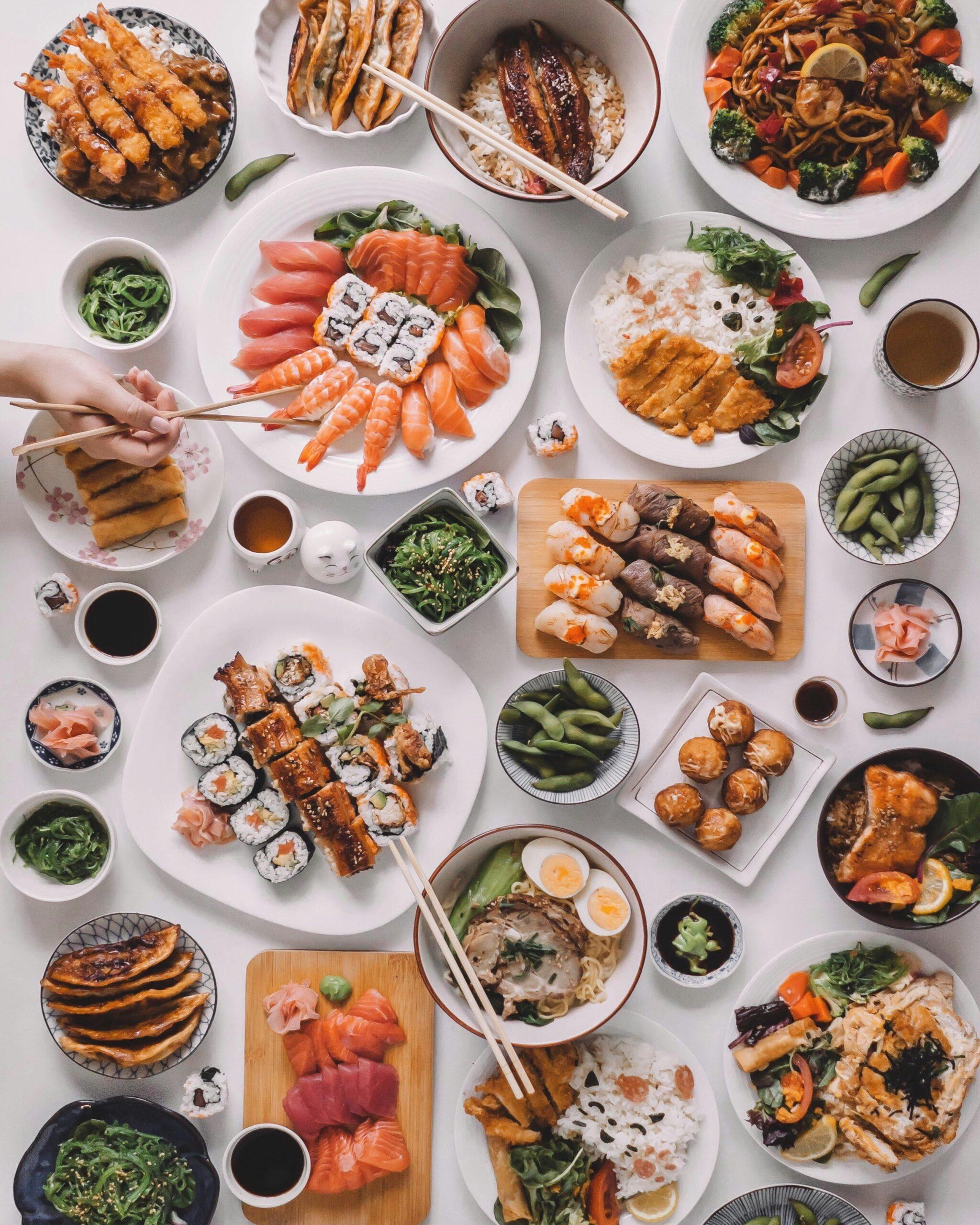Welcome to a 10-day Japan solo travel itinerary for food lovers!
Japan is a must-visit destination for many travelers, and if you’re passionate about food, you should definitely add it to your list too.
This country offers more than just ramen and sushi; every city has its own regional specialties, unique dining culture, and seasonal dishes.
This Japan solo food itinerary is perfect for those who want to spend 10 days stimulating their taste buds more than ever.
You’ll discover the street food stalls of Osaka, refined kaiseki dining in Kyoto, Nara’s famous mochi shops, Hiroshima’s heavy-layered okonomiyaki, and more.
While discovering hidden food gems of Japan, you’ll find the perfect balance of local flavors, cultural experiences, and iconic dishes.
All you should do is follow this 10-day Japan trip for food lovers to save time planning and ensure you don’t miss any must-try dishes.
So, let’s begin to guide you through Japan’s best flavors, while making your solo travel experience unforgettable!
Day 1-2: Tokyo - Street Food & Sushi Capital
Tokyo is often the first stop for international travelers because it's the perfect introduction to Japanese cuisine.
And, you should definitely start your journey here.
Your first stop should be the Tsukiji Outer Market, where you can enjoy fresh seafood, grilled skewers, and tamagoyaki—Japanese omelet on a stick.
If you’re a die-hard sushi lover, you should definitely head to Toyosu Fish Market—the replacement for the old Tsukiji inner market—for incredibly fresh fish that practically melts in your mouth.
For an affordable, solo-friendly, and fun sushi experience, you can try a quintessential sushi from a conveyor-belt sushi (kaitenzushi) chain like Sushiro or Genki Sushi.
For ramen, your next stop is Tokyo Station’s Ramen Street, home to multiple famous ramen shops, each serving different broth styles.
As a solo traveler, you would love Ichiran Ramen; you can order via vending machine, sit in an individual booth, and receive your ramen through a tiny window.
You’ll lose yourself in tontoksu broth’s creamy, flavorful, customizable taste.
At that point, you’re full but need a dessert.
The solution is to wander into Harajuku for crepes filled with fruit and cream or try melon pan ice cream sandwiches in Asakusa.
And in the evening, head to narrow alleyways filled with tiny izakayas (Japanese pubs) specializing in yakitori (grilled chicken skewers), such as Shinjuku Omoide Yokocho or Golden Gai.
Lastly, if you need a snack in the middle of the night, convenience stores (konbini) are full of bento boxes, onigiri, and fried chicken from Lawson or FamilyMart.
Tokyo restaurant guide: Live Japan Perfect Guide
Day 3: Nikko or Yokohama Food Day Trip
Nikko and Yokohama are two perfect options for those who want to experience a cultural and food-filled day.
In Nikko, you should try delicate, silky, and protein-rich yuba (tofu skin), which reflects the town’s Buddhist traditions.
You can find this dish at many restaurants near Toshogu Shrine. They offer yuba-based set menus including hot pot dishes, soups, and even desserts.
Alternatively, you can head to Yokohama (30 minutes from Tokyo) and design your own instant noodle cup in the Cup Noodles Museum.
Speaking of museums, Yokohama also has a Ramen Museum where you can taste different and unique ramen styles from across Japan under one roof.
Did you know that Yokohama has Japan’s largest Chinatown?
If you go there, you’ll find street food stalls that offer unmissable steam buns, gyoza, sesame balls, and shumia (steamed dumplings).
Whether you prefer the refined tofu-based meals of Nikko or the bustling street food of Yokohama, you’ll have the chance to taste dishes outside Tokyo’s food scene.
Day 4-5: Kyoto - Traditional Flavors & Kaiseki Cuisine
In the heart of traditional Japanese cuisine, Kyoto, you should start at Nishiki Market, often called “Kyoto’s kitchen”.
This market has hundreds of food stalls selling everything from skewered seafood, matcha desserts, yuba tofu, seaweed dumplings, and freshly made mochi.
If you’re a matcha-lover, Kyoto offers you its famous matcha (green tea), matcha ice cream, lattes, and wagashi (traditional sweets served with tea).
You can even learn the art of preparing and serving matcha with a tea ceremony.
But a true, unforgettable Kyoto experience cannot be complete without booking a kaiseki meal.
Kaiseki is a multi-course fine dining experience that highlights seasonal ingredients and precise cooking techniques.
It often includes dishes like sashimi, simmered vegetables, grilled fish, and matcha-based desserts that are expensive but worth every second.
If you prefer more casual food experiences, you should head to Arashiyama, where street stalls sell croquettes, matcha ice cream, and yuba dishes.
In the end, Kyoto is a must-visit destination for experiencing the refined and elegant side of Japanese cuisine.
Day 6: Nara - Street Food & Sake
Nara, just under an hour from Kyoto, offers traditional dishes you won't find in Tokyo or Osaka.
One of the specialties here is kakinoha sushi, which is pressed sushi wrapped in persimmon leaves to preserve the fish and gives it a unique fragrance.
Another is to visit the famous mochi shop Nakatanidou, where the workers put on a show for visitors by pounding rice dough at incredible speed.
But, it's more than just a show; freshly pounded mochi will be warm, chewy, and soft like nothing you’ve tried before.
This alone makes Nara worth the visit.
Day 7-8: Osaka - Japan’s Kitchen (Dotonbori & Beyond)
Osaka is famous for its comforting and satisfying street food, hence its nickname "Japanese Kitchen."
In Osaka, you should start your culinary adventure at Dotonbori, where neon lights and giant food signs blow your mind.
The first must-try food is takoyaki (octopus balls), which is amazingly crispy outside and creamy inside, topped with sauce, mayo, and bonito flakes.
Another must-try is okonomiyaki, a savory pancake with cabbage, meat, or seafood cooked on a griddle.
And of course, don’t forget to try the specialty of Osaka: kushikatsu (deep-fried skewers)—you should dip each skewer into the communal sauce!
Afterwards, visit Kuromon Ichiba Market, where you can try small portions of wagyu beef skewers, fresh oysters, sea urchin, and giant grilled scallops on the spot.
Here, you can also find seasonal fruits like strawberries and melons as a sweet treat.
At night, explore Osaka’s izakaya scene, chat with locals, and enjoy its lively, welcoming vibe.
Day 9: Hiroshima - Okonomiyaki Heaven
I know you’ve tried okonomiyaka in Osaka, but Hiroshima offers a different twist on this dish.
Here, the okonomiyaki ingredients are not mixed; they are made in layers, with noodles, cabbage, egg, and meat placed on each other.
For an interactive experience, you should visit Okonomimura, a building with multiple floors of okonomiyaki stalls, where each one offers its own twist.
Fresh oysters are another specialty of Hiroshima, which you can try in grilled, fried, or raw versions.
Many stalls on the streets sell oyster skewers, but if you want to try a place specifically famous for its oysters, you should visit Miyajima Island, a short ferry ride away.
Afterwards, visit Hiroshima Peace Park to reflect on the city’s resilience and creativity to add a unique touch to your journey.
Day 10: Fukuoka - Ramen Paradise
You should end your trip in Fukuoka, home of Hakata ramen.
Hakata ramen is famous for its thin, straight noodles in a rich tonkotsu meat broth, topped with green onions, pickled ginger, and sometimes extra meat slices.
The best version of this food is mostly found in yatai stalls, small open-air food stands that serve at night along the streets.
These stalls serve ramen, yakitori, and local snacks, and are also perfect for creating a social atmosphere for solo diners.
Another specialty of Fukuoka is mentaiko (spicy cod roe), which is made with onigiri, pasta, and rice dishes.
For a fun experience, you should visit Canal City’s Ramen Stadium, which is filled with an indoor food court dedicated only to ramen shops from all over Japan.
This is the best way to sample different regional ramen styles in one place without leaving the city.
Fukuoka is often overlooked compared to Tokyo or Osaka, but if you’re a true foodie, you should add this ultimate final day to your Japan solo food itinerary.
Hidden Foodie Experiences for Solo Travelers
Beyond restaurants and street food, Japan offers unique foodie experiences to enrich your solo journey.
For example, you might consider staying at a ryokan (traditional inn) to enjoy a kaiseki dinner served in your room and savor fine dining filled with seasonal and regional ingredients.
Or, you can join a Japanese cooking class to learn how to make ramen, sushi, or wagashi sweets from a professional instructor.
These classes also teach insights into Japanese ingredients and culinary techniques, and often include small-group or private lessons, ideal for your solo journey.
These experiences make your trip more interactive and personal, so you can return home with amazing stories and memories.
P.S. For vegetarian and vegan venues, you can look for Happycow Japan.
And That's It!
This 10-day Japan solo travel itinerary for food lovers shows how diverse and rewarding Japan’s culinary scene is.
With this itinerary plan, you’ll be able to taste and experience everything from Tokyo’s street food to Kyoto’s refined kaiseki, Osaka’s hearty soul food, Hiroshima’s layered okonomiyaki, and Fukuoka’s ramen paradise.
Travelling solo in Japan can enhance the food experience with the freedom to follow your cravings, sit at sushi counters, explore markets at your own pace, and enjoy meals without compromise.
If you’re planning a trip, use this itinerary as your guide to maximize your time and appetite.
You’ll also love:
How to Plan Your First Solo Trip Without Feeling Overwhelmed
Top 10 Airport Hacks Frequent Travelers Swear By (2025 Guide)
Budget Travel Essentials: Must-Have Items for Affordable Adventures




